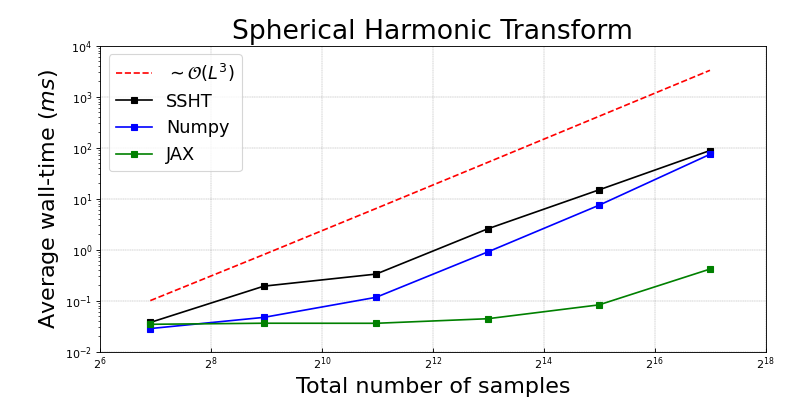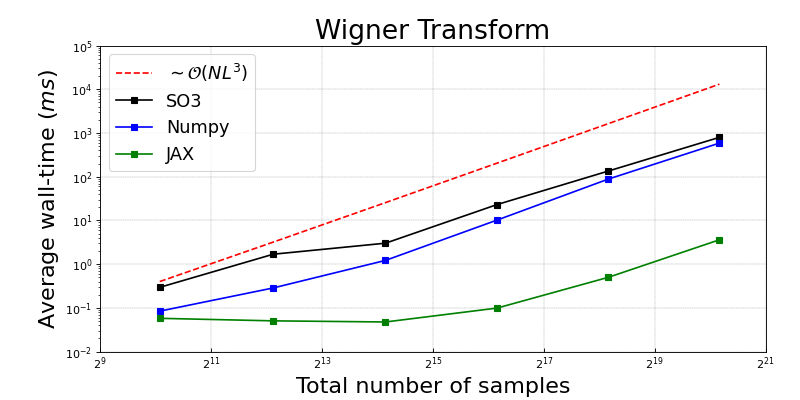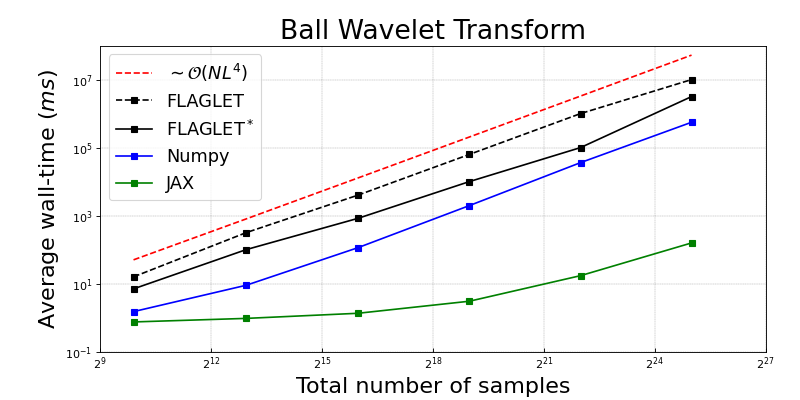Notebooks#
A series of tutorial notebooks which go through the absolute base level application of S2BALL apis. Post alpha release we will add examples for more involved applications, in the time being feel free to contact contributors for advice! At a high-level the S2BALL package is structured such that the 4 primary transforms: the Wigner, spherical harmonic, Fourier-Laguerre, and Wigner-Laguerre transforms, can easily be accessed.
Usage 🚀#
To apply the transforms provided by S2BALL one need only import the package and apply the respective transform, which is as simple as doing the following:
from s2ball.transform import *
import numpy as np
# Load some data
f = np.load("path_to_your_data.npy")
and for data on the sphere with shape \([L, 2L-1]\) L = L
# Compute harmonic coefficients
flm = harmonic.forward(f, L)
# Sythensise signal f
f = harmonic.inverse(flm, L)
|
or data on SO(3) with shape \([2N-1, L, 2L-1]\) L = L; N = N
# Compute Wigner coefficients
flmn = wigner.forward(f, L, N)
# Sythensise signal f
f = wigner.inverse(flmn, L, N)
|
or data on the ball with shape \([P, L, 2L-1]\) L = L; P = P
# Compute spherical-Laguerre coefficients
flmp = laguerre.forward(f, L, P)
# Sythensise signal f
f = laguerre.inverse(flmp, L, P)
|
or with shape \([P, 2N-1, L, 2L-1]\) L = L; N = N; P = P
# Compute Wigner coefficients
flmnp = wigner_laguerre.forward(f, L, N, P)
# Sythensise signal f
f = wigner_laguerre.inverse(flmnp, L, N, P)
|
However, for repeated application of these transforms it is optimal to instead precompile various kernels which can be placed on device to minimise i/o during e.g. training. This operational mode can be seen throughout our examples, found here.
Benchmarking ⏳#
The various generalized Fourier and wavelet transforms supported by S2BALL were
benchmarked against their C counterparts over a variety of parameter configurations.
Each benchmark has been averaged over many runs, though here we provide only the mean.
All CPU based operations were executed on a single core from a AMD EPYC 7702 64-core
processor, whereas all JAX operations were executed on a single NVIDIA A100 graphics
processing unit. The Jupyter notebooks for each benchmark can be found here.
Note that benchmarking is restricted to scalar (spin 0 ) fields, though spin is supported
throughout S2BALL. Further note that for Wigner tests we set N=5, and in our
Laguerre and wavelet benchmarking we set N=1, as FLAG/FLAGLET otherwise take
excessive compute. Finally, S2BALL` transforms trivially support batching and
so can, in many cases, gain several more orders of magnitude acceleration.




